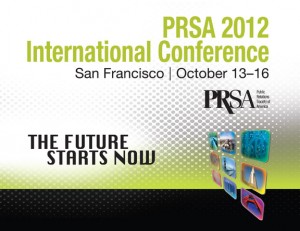This week, Instagram started a digital fury with a blog post that described a soon-to-be implemented privacy change. The addition to the current terms of use policy was, “You agree that a business may pay Instagram to display your photos in connection with paid or sponsored content or promotions without any compensation to you.” The outcry came from users thinking that Instagram intended to sell their photos without permission or paying them for their use.
This change became the center of a heightened digital panic and “jump ship” mentality of a lot of their users. This immediate blowback seems to be directly tied to Instagram potentially presuming its users fully understood the pre-existing policy.
According to a blog post by Nilay Patel, “First, like every other company on the web that stores user data, Instagram has always had an expansive license to use and copy your photos. It has to — that’s how it runs its networks of servers around the world.” The public didn’t understand the terms of use policies as they relate to the services and how they apply to their data when using the service, evidenced by the explosive mass hysteria and digital backlash from users.
While the blog post was written with the good intent to provide users with knowledge of a changing policy, Instagram’s blog not only allowed users to see the change in policy, but brought the original policy to the attention of many users. They seemed to be reading the actual policy after reading the blog, versus when they first subscribed to the free service. They were concerned with its entire composition, not just the composition of the added sentence.
If Instagram understood this long-known truth about its users, they could have been much more forthcoming and avoided this crisis. Instagram did respond with a positive blog post to show they were listening and aiming to please their users. In an age of increased social responsibility, it was wise for Instagram to be reactive in support of their policies while being supportive of their users.
However, Instagram could have avoided this crisis simply by using language that’s easier to understand and being much more transparent with their message describing the policy, the changes being made and how it would affect users.
Most users understand that businesses like Instagram have to start generating money, and in the online world, that involves monetizing user data. If Instagram incorporated or engaged their users more in this process, it could have averted this crisis, and people would understand this need. People aren’t afraid to pay for the things they like, such as how Netflix maintained their membership throughout their price divisions, when they listened and engaged their users and made changes to their proposed price changes to fit the needs of their goals and their users. However, the same consumers who are not afraid to pay are however resistant to clouded change and uninvolved decisions.
As a result of the quick action and response by Instagram, they released a statement denying reports that say about 25 percent of their total daily active users were lost. The company plans to go forward, to take the time to complete their plans and then come back to users and explain how they would like advertising to work. However, the public uproar could have been prevented had Instagram taken a more proactive approach.
The biggest lesson for communicators and practitioners is that transparency rules. In this digital world, where free digital startups begin and explode, the transition that will come allowing these companies to earn will need to involve their users and their supporters instead of only burning up venture capitalist money or changing terms to earn through data but lose trust from users.
Vanessa Barnett, technology and media lawyer at Charles Russell LLP, said, “There’s no free lunch on the Internet, and the modern currency is not pounds, shillings and pence but personal data. What matters, and what the law says, is that if you collect and use personal data, you need to be transparent about it. As long as we have transparency, we also have free will.”
 JR Rochester is a digital copywriter for Lowe’s Home Improvement and a recent graduate of East Carolina University with a degree in public relations and interpersonal organizational communication. He has experience in social media, community building digitally and locally, in-depth experience planning, implementing digital product marketing strategies, grass roots efforts, client and brand reputation management, event planning and marketing. He is a member of PRSA Charlotte, PRSA New Professionals Section and Toastmasters International. He is a proud veteran, drummer, avid cook and self-professed geek.
JR Rochester is a digital copywriter for Lowe’s Home Improvement and a recent graduate of East Carolina University with a degree in public relations and interpersonal organizational communication. He has experience in social media, community building digitally and locally, in-depth experience planning, implementing digital product marketing strategies, grass roots efforts, client and brand reputation management, event planning and marketing. He is a member of PRSA Charlotte, PRSA New Professionals Section and Toastmasters International. He is a proud veteran, drummer, avid cook and self-professed geek.



